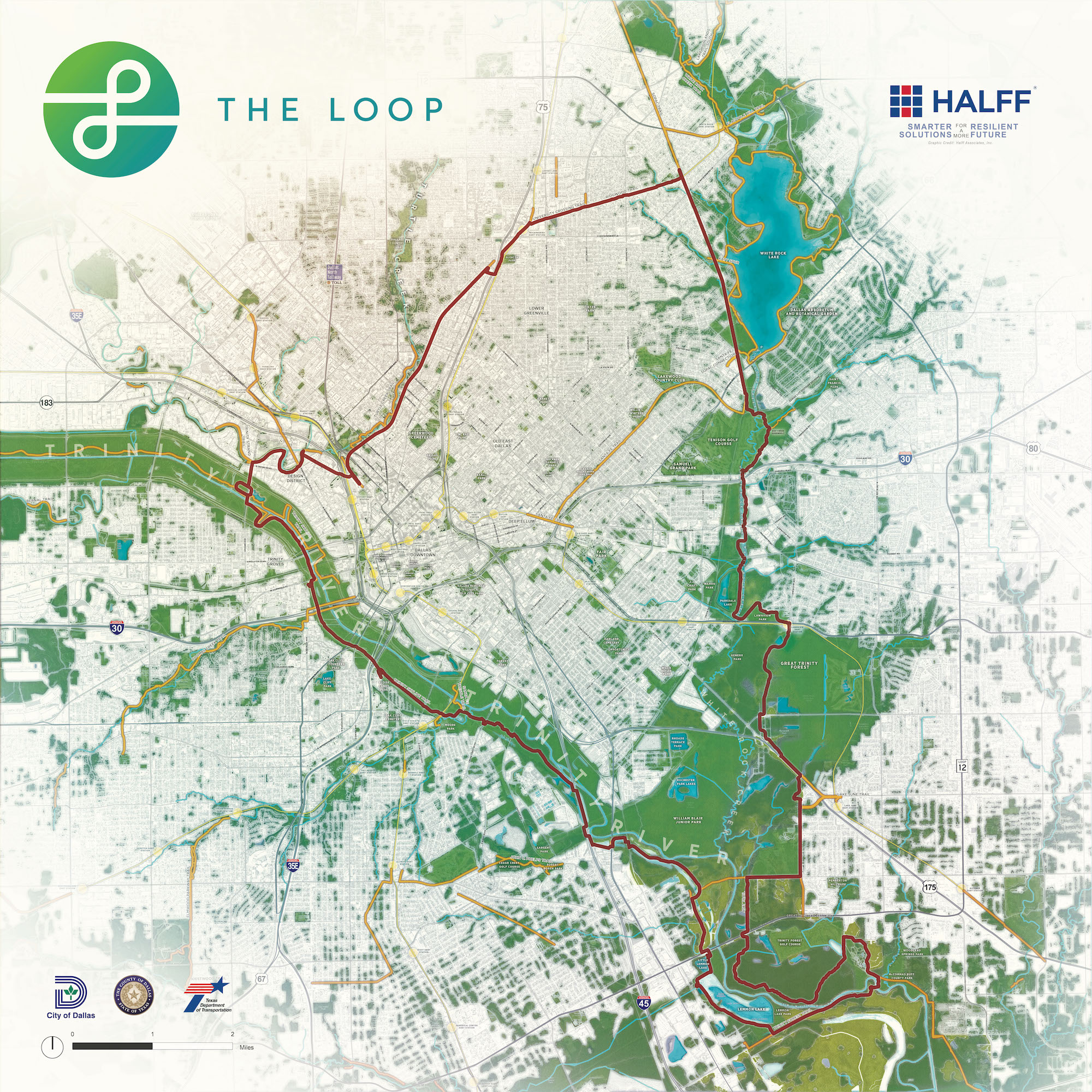It’s no longer just a few lines on a map. Dirt is finally flying. The Loop, the long dreamed-of network that will link and extend an existing 39 miles of disconnected hike-and-bike trails into one roughly 50-mile circuit, is really happening.
A groundbreaking this week celebrated the start of construction on the first phase of the Trinity Forest Spine Trail, which will connect the Santa Fe Trail in East Dallas to points south: on to I-30, then the Lawnview DART Station, then on down to Pemberton Hill Road and to the trail in the Trinity Forest. That should wrap in about 12 to 18 months.
Farther west, the Hi Line Connector that will extend the Katy Trail from Victory Park to the Design District and toward Trinity River is fully designed and funded. Philip Hiatt Haigh, executive director of the Circuit Trail Conservancy, says that construction bids on the connector are out as of this week, and pending City Council approval the work could start in the next few months.
The Loop has been in the drawing board stage for years, with the city putting the Circuit Trail Conservancy in charge of building it and raising the money. Now, the nonprofit has about $55 million to spend, a mix of 2017 bond money, private donations, TIF dollars, and county and federal funds.
“This is the first time in the recent past that I can think of where money is not the limiting factor,” Hiatt Haigh says.
Pete Buttigieg’s Department of Transportation is willing to chip in for local infrastructure projects that provide connections to public transit and help re-stitch communities split by highways, which helps. The conservancy has applied for a $22 million federal grant that would expand the scope of the trail’s footprint. Meanwhile, both the city and Dallas County have increasingly recognized the importance of funding alternatives to car-dominated roadways, including hike-and-bike trails, Hiatt Haigh says.
“It’s a much better use of public money to build a really amazing trail system than it is to build a roadway that’s going to be really costly to maintain and have a pretty limited service life,” he says.
Dallas still has a long way to go, particularly when it comes to connecting the city’s increasingly impressive trail system to its deadly and pothole-blasted streets, vanishing sidewalks, and disappearing bike lanes. Dallas’ trails, right now, are more recreational than practical, although they can certainly help you get around town: From an apartment just east of White Rock Lake, I used to bike to work at an office in Uptown and could take trails at least 80 percent of the way.
But The Loop will only take you so far. Building what the wonks would call an “active transportation network” means stitching this fantastic, growing trail network into a street system that encourages walking and cycling and public transit.
“We need to make sure that there’s this connected network—you know, that this bike lane connects into that trail, that these projects are all coordinated,” Hiatt Haigh says.





